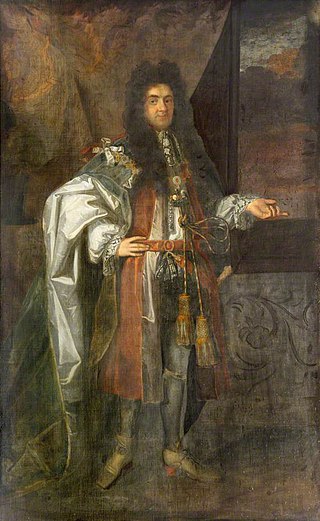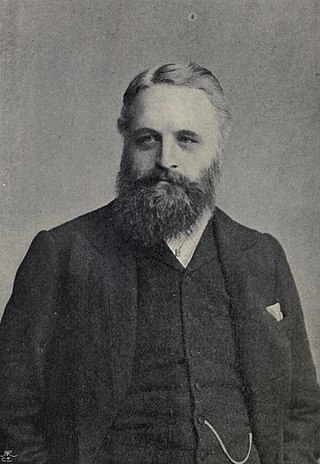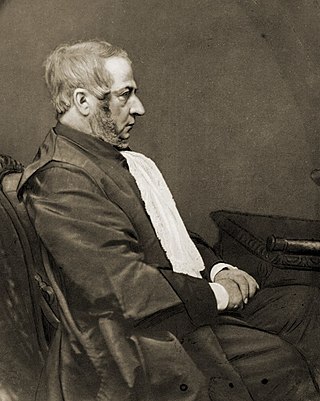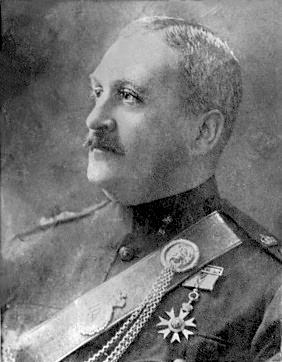

George Stiebel (c. 1821-1896) was a Jamaican trader and entrepreneur who became a millionaire from gold mining in South America. [1] [2] Stiebel is considered Jamaica's first millionaire of African descent. [3]


George Stiebel (c. 1821-1896) was a Jamaican trader and entrepreneur who became a millionaire from gold mining in South America. [1] [2] Stiebel is considered Jamaica's first millionaire of African descent. [3]
His parents were Sigismund Stiebel (1790-1859), a Jew who emigrated from Germany and his housekeeper, a Jamaican of African descent. [4] Sigismund was active as a trader in South America and the West Indies. He later married Eliza Jacob, née Mocatta (1811–1858); the couple's children Adeline, Daniel, Jacob and Rebecca were born between 1837 and 1844. Sigismund was buried three days after his death in London's Balls Pond Jewish Cemetery. His paternal grandfather was Isaac Daniel Stiebel (1764 or 1766-March 26, 1850). [5]
Stiebel left school at the age of 14, worked first for a carpenter and then at the age of 19 at the famous Ferry Inn in Jamaica, between Kingston and Spanish Town. With the start-up capital that his father gave him in the 1840s, he was able to buy one and later two more ships and set up sea transport between North and South America. In the late colonial period of Cuba, he switched to a more lucrative arms trade, which is why he had to stay in prison for a while. In 1851 he married the missionary's daughter Magdalene Baker (1825-1892), with whom he had children Sigismund (1852-1871) and Theresa (1856-1922).
After his ship is said to have sunk off the coast of Venezuela in 1856, he returned a wealthy man in 1873. [6] With three other black men he is said to have discovered a gold mine, which is said to have had a monthly income of 80,000 pounds sterling for several years. While the others gave away their shares at a ridiculous price, he kept his shares and became a millionaire when the mine was later capitalized for $16,000,000.
He acquired 99 properties in Jamaica, including two sugar plantations, a wharf at Church Street, Great Salt Pond and a cattle pen at Minard in the Saint Ann's Bay District. After the Church of England's ownership of the Devon Penn in Kingston, which had been granted to the Geneva minister James Zeller in 1644, expired in October 1879, George Stiebel was able to erect his representative Devon House there two years later. Located in a park, the neoclassical mansion, built in 1881, is now one of the sights of the city of Kingston.
In 1891 he was made Companion of the Order of St Michael and St George by Queen Victoria.
George Stiebel died on 29 June 1896 at Devon House with no close family members beside him, his death was witnessed by Theophilus Beanswell. [7] His daughter who was in England with his five grandchildren was not able to attend his funeral. He died a year after both his grandson Douglas Jackson (1884-1895) and son-in-law Richard Hill Jackson (1845-1895) died. They died within one week of each other at Devon House. [8]

Kingston is the capital and largest city of Jamaica, located on the southeastern coast of the island. It faces a natural harbour protected by the Palisadoes, a long sand spit which connects the town of Port Royal and the Norman Manley International Airport to the rest of the island. Kingston is the largest English-speaking city south of the United States in the Western Hemisphere.

William Wymark Jacobs was an English author of short fiction and drama. He is best known for his story "The Monkey's Paw".

Christopher Monck, 2nd Duke of Albemarle was an English Army officer, peer, politician and colonial administrator who sat in the House of Commons from 1667 to 1670 when he inherited his father's dukedom and sat in the House of Lords.

Michael Chung also known as Mao Chung, was a Jamaican musician who played keyboards, guitar and percussion instruments. He was also an arranger and record producer of Jamaican music, and worked with a wide array of musicians, notably Lee Perry and Sly and Robbie.

Sir George Newnes, 1st Baronet was a British publisher and editor and a founding figure in popular journalism. Newnes also served as a Liberal Party Member of Parliament for two decades. His company, George Newnes Ltd, was known for such periodicals as Tit-Bits and The Strand Magazine; it continued publishing consumer magazines such as Nova long after his death.

Sir George Strickland Kingston was the Deputy Surveyor to William Light, engaged to survey the new colony of South Australia. He arrived in South Australia on the Cygnet in 1836. Kingston was also the first Speaker of the South Australian House of Assembly.

Saint Andrew is a parish, situated in the southeast of Jamaica in the county of Surrey. It lies north, west and east of Kingston, and stretches into the Blue Mountains. As of the 2011 census, it had a population of 573,369, the highest of any of the parishes in Jamaica.

Boconnoc is a civil parish in Cornwall, England, United Kingdom, approximately four miles (6 km) east of the town of Lostwithiel. According to the 2011 census the parish had a population of 96.

Edward Fortescue Wright was an English cricketer who became a member of the Colonial Service in the West Indies.

Jacob Raphael De Cordova was the founder of the Jamaica Gleaner. He settled in Texas in 1839 and lived in Galveston. After living in Galveston, De Cordova moved to Houston, Texas, where he was elected to the Texas House of Representatives to the second Texas Legislature in the year 1847.
The history of the Jews in Jamaica predominantly dates back to migrants from Spain and Portugal. Starting in 1509, many Jews began fleeing from Spain because of the persecution of the Holy Inquisition. When the English captured Jamaica from Spain in 1655, the Jews who were living as conversos began to practice Judaism openly. By 1611, the Island of Jamaica had reached an estimated population of 1,500 people. An estimated 75 of those people were described as "foreigners," which may have included some Portuguese Jews. Many Jamaican Jews were involved in the Atlantic slave trade, both owning and trading in enslaved Black people.

Charles Hervey Bagot, often referred to as "Captain Bagot", was a South Australian pastoralist, mine owner and parliamentarian, and was the ancestor of a number of notable South Australian citizens.

Stevenstone is a former manor within the parish of St Giles in the Wood, near Great Torrington, North Devon. It was the chief seat of the Rolle family, one of the most influential and wealthy of Devon families, from c. 1524 until 1907. The Rolle estates as disclosed by the Return of Owners of Land, 1873 comprised 55,592 acres producing an annual gross income of £47,170, and formed the largest estate in Devon, followed by the Duke of Bedford's estate centred on Tavistock comprising 22,607 with an annual gross value of nearly £46,000.

Sir Abraham Elton, 2nd Baronet of Bristol and Clevedon Court, Somerset, was a British merchant, slave trader and Whig politician, who sat in the House of Commons for Taunton between 1724 and 1727, and then for Bristol from 1727 until his death in 1742. He also served as the High Sheriff of Bristol from 1710 to 1711, and was Mayor of Bristol for the year 1719 to 1720.

Devon House, built in 1881, is the former residence of George Stiebel (1820–1896), Jamaica's first millionaire of colour, in St. Andrew. He gained his wealth in Venezuela and returned to Jamaica. He was appointed as the Custos, a high civic post, of St. Andrew. His residence has been restored and is operated as a house museum and National Heritage Site.

Frank Cundall was an English art historian, editor and author, the son of the writer and publisher Joseph Cundall. He was closely involved in the administration of and produced the reports for a series of international exhibitions held in London in the 1880s, and catalogued the art library at the South Kensington Museum, later the Victoria and Albert Museum.
Alexander Bravo, sometimes spelled Alexandre Bravo, was a Jamaican merchant, politician and planter who served as Auditor-General of Jamaica. Bravo was the first Jew to be elected to the House of Assembly of Jamaica.
Emanuel Lousada was a British merchant, planter and politician with interests in Jamaica and Barbados. He was the High Sheriff of Devon from 1842 until 1843, making him the first Jew to hold the title in a county outside of the Sheriff of London, which had been held first by David Salomons in 1835. Lousada was associated with Peak House, Sidmouth. Lousada owned more than 400 African slaves on his sugarcane plantations in the British West Indies at the time of the Slavery Abolition Act 1833. He died a wealthy man, leaving £100,000 in his will.
George Jacobs was a Jamaican-American rabbi.